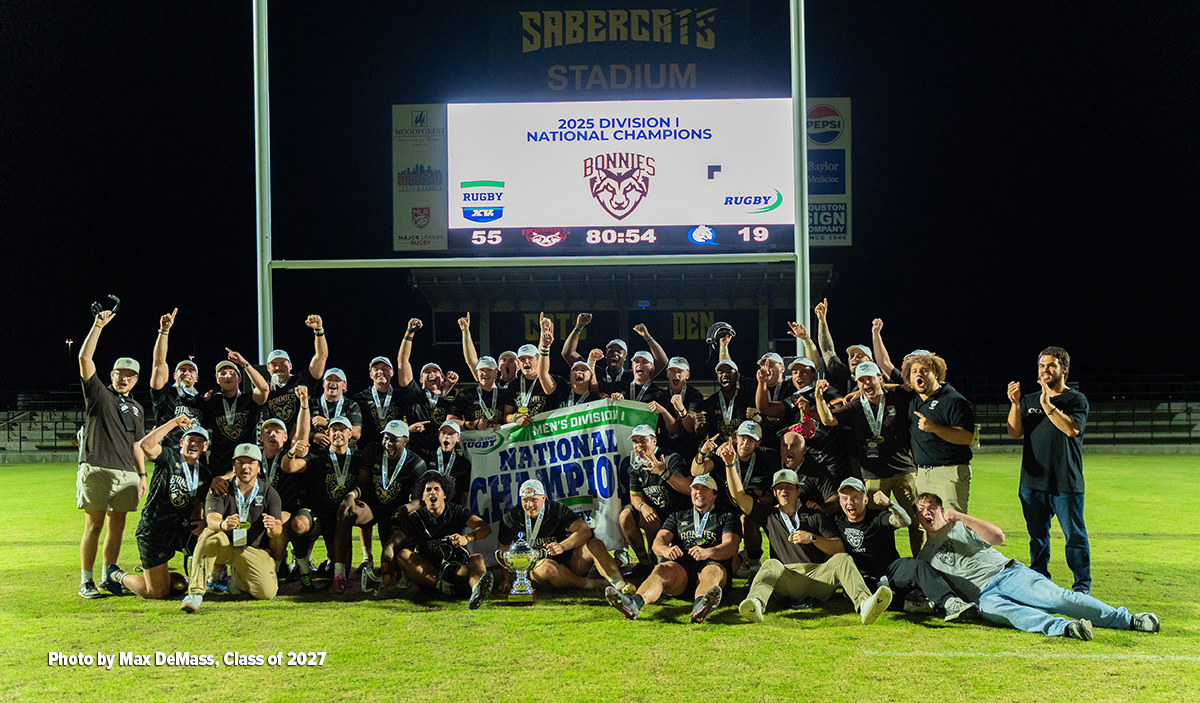Dec 13, 2025
This time, there was never a doubt.
After hanging on by their fingernails in 2021 to edge Penn State, 19-18, for the National Collegiate Rugby Division I Championship, St. Bonaventure dominated Queens University, 55-19,…

This time, there was never a doubt.
After hanging on by their fingernails in 2021 to edge Penn State, 19-18, for the National Collegiate Rugby Division I Championship, St. Bonaventure dominated Queens University, 55-19,…